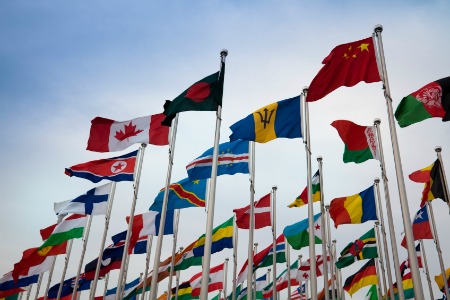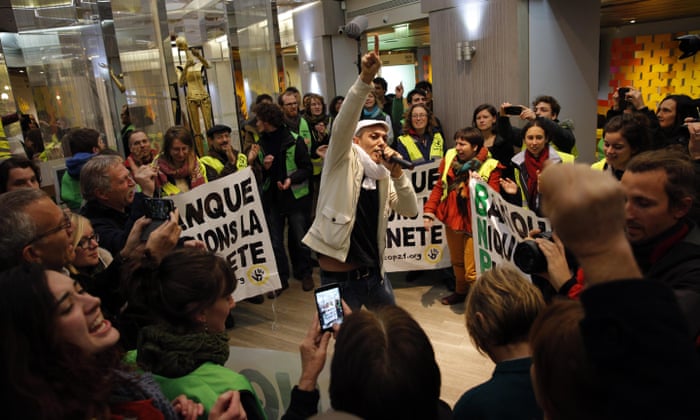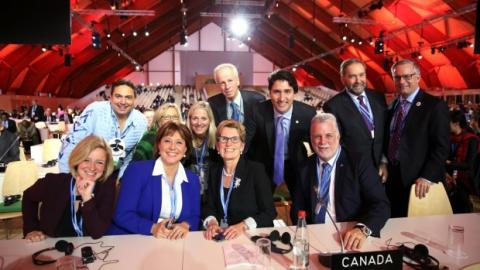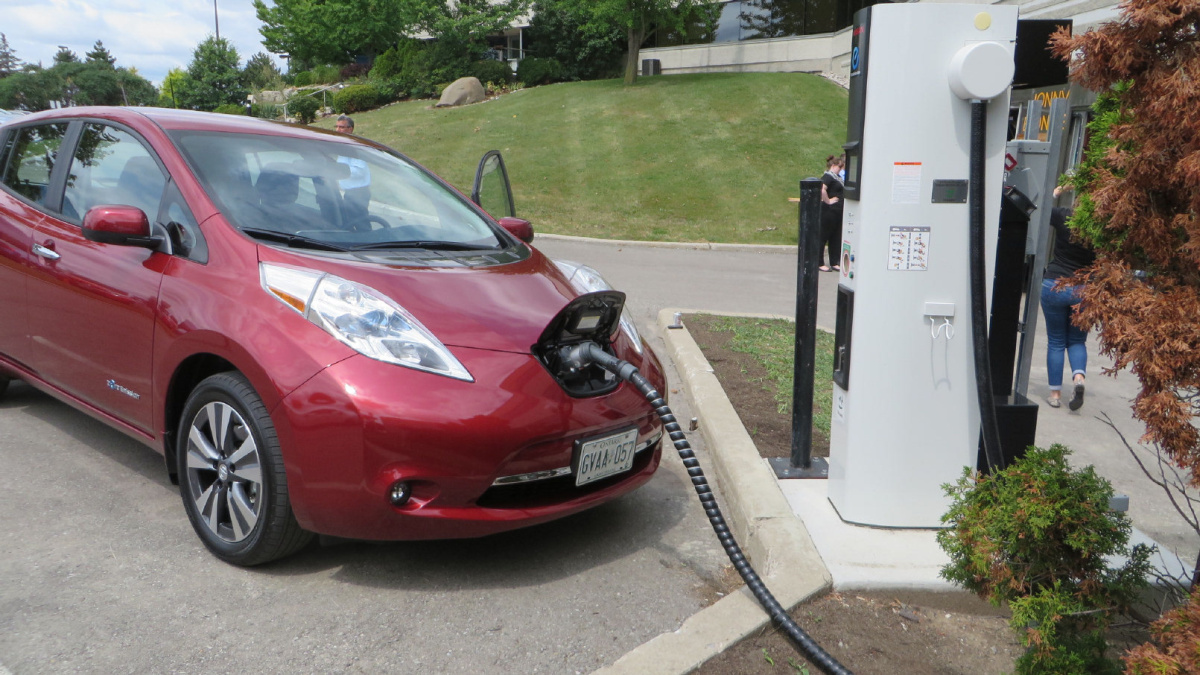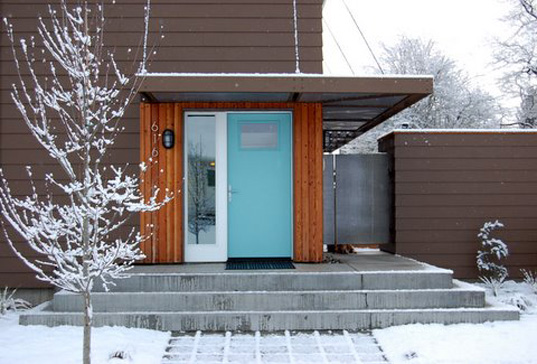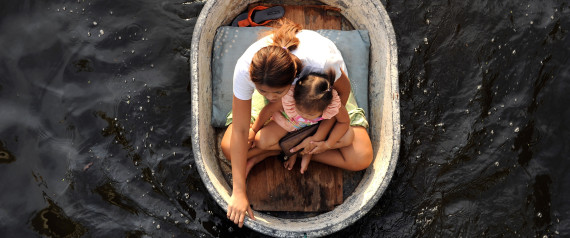
By Naomi Klein, reposted from the Huffington Post, Dec 10, 2015
These remarks are adapted from a speech by Naomi Klein on Monday at “Now is Not the Time For Small Steps: Solutions to the Climate Crisis and the Role of Trade Unions” at Salle Olympe de Gouges.
PARIS — Here is what we know about what to expect from the official climate negotiations.
The deal that will be unveiled in less than a week — likely to much fanfare and self-congratulation from politicians and an overly deferential press — will not be enough to keep us safe. In fact, it will be extraordinarily dangerous.
The targets that the major economies brought to Paris lead us to a future of 3-4 degrees warming — those are the Tyndall Centre’s numbers — not 2 degrees, as was pledged in Copenhagen. Two degrees is how our governments defined “dangerous warming” in the Copenhagen Accord.
And we also know from leading climate scientists like James Hansen that 2 degrees is too high. Indeed we know from lived experience that the amount we’ve already warmed the globe is too much. We are already living the era of dangerous warming. It is already costing many thousands of lives and livelihoods — from the Philippines to Bangladesh to Nigeria to New Orleans to the Marshall Islands.
Speaking about climate change as if “dangerous” is a place far off in the distance is nothing less than, as my friend Kumi Naidoo put it yesterday, “subliminal racism.” And it’s getting less and less subliminal every day.
The targets that the major economies brought to Paris lead us to a future of 3-4 degrees warming — not 2 degrees, as was pledged in Copenhagen.
So we know already that the deal will steamroll over scientific red lines. We also know, from the paltry levels of financing wealthy countries have put on the table, that it is going to steamroll over equity red lines. That wealthy countries will continue to fail to do our fair share of emission reductions, or to pay our fair share for the impacts of that failure. And we must pay — pay so that poorer countries that did little to create this crisis are compensated for loss and damage and so that they can leap frog over fossil fuels and go directly to a clean energy economy.
Which is why, on Dec. 12 at 12 o’clock — that’s 12, 12, 12 — many activists will be in the streets of Paris, peacefully demonstrating against the violation of these red lines. We will also be mourning the lives already lost to climate disruption, in solidarity with the lives lost to the tragic attacks here in Paris, and enlarging that circle of mourning.
By taking to the streets, we will be clearly and unequivocally rejecting the Hollande government’s draconian and opportunistic bans on marches, protests and demonstrations, the shameful pre-emptive arrests of climate activists and the unprecedented restrictions on the freedom of speech of civil society within the summit.
Liberté is not just a word and it does not just apply to Christmas markets and football matches. Indeed it means nothing if it does not apply to political dissent and the defense of life on earth.
Speaking about climate change as if ‘dangerous’ is a place far off in the distance is nothing less than, as my friend Kumi Naidoo put it, ‘subliminal racism.’
This disobedience does not make us insensitive. It does not make us hooligans. It is our sacred duty — to those suffering in the present day and to those who stand to lose so much more if we lose this race against time for climate justice. And yet as we join together to reject the dangerous world offering by the governments inside Le Bourget, as well as by the corporations who finance them, we must also do more than say “no.”
We must also say “yes” — yes to the world we want. We need to paint a picture of what life could be like inside those scientific red lines, life within the limits imposed on us by nature. And that life needs to be not just better than a future of climate catastrophe. It needs to be better than the present — a present of catastrophic levels of austerity, deepening inequality and rising racism.
That is our task. Jeremy Corbyn rightly describes the challenge we face as a crisis of imagination. We must imagine a world that is both radically different and radically better than the one we have right now.
So I want to spend some time sharing an experience we had in my home country, Canada, where a group of us — 60 organizers, leaders and theorists from movements representing labor, climate, migrant rights, anti-poverty, food justice, housing rights, women’s rights — came together to do something we do very rarely.
We must pay — pay so that poorer countries that did little to create this crisis are compensated for loss and damage and so that they can leap frog over fossil fuels and go directly to a clean energy economy.
And that is to dream together. To sketch out a future that would respect both natural limits and human rights and human needs. We came up with a document called The Leap manifesto that has now been signed by over 100 Canadian organizations, including many trade unions, and tens of thousands of Canadians, including Leonard Cohen and Ellen Page. It has inspired similar manifestos to be written from Nunuvut to Australia.
At its heart is the argument that if we take the imperative to rapidly build a post-carbon economy seriously, we have a once-in-a-century chance to transform our economy to make it far more equitable, so that it works for many more people. This would be a clean economy with many more good unionized jobs that pay a living wage. With better public services that are more equitably distributed.
But before I get into that optimistic stuff, I want to confess that I didn’t come to climate change by seeing the sunny side of disaster. Quite the opposite: I come to it by looking at the worst that humans are capable of in times of crisis — what I call “disaster capitalism.”
My climate change “wake up” came almost exactly 10 years ago, when Hurricane Katrina was devastating New Orleans. That experience showed me that there is this irreconcilable conflict between the reality of climate change and the so-called free market ideology that has ruled our world for four decades.
Because we must always remember that what happened in New Orleans was not just about the weather. It was the collision of heavy weather and the legacy of four decades of systematic dismantling of the public sphere, and layered on top of all of it was the reality of systemic racism at every level.
Once Katrina hit, residents confronted what Paul Krugman calls the “Can’t do state.” FEMA seemingly couldn’t find New Orleans for five days. People — overwhelmingly African American — were just abandoned, left on their own.
And then, after the shock… came “The Shock Doctrine.” For right-wing ideologues, the post-Katrina plan was simple: use the crisis to do away with the public sphere all together. Public housing. Public school. Public hospitals. The other thing that Republicans pushed for immediately after Katrina was to suspend labor standards in the area.
So the reconstruction of New Orleans became a hotbed of labor abuses, particularly for migrant workers. This is why the fights for labor rights and the fight against austerity cannot be separated from the fight for climate action. The public sphere that the international labor movement is working so hard to defend is our only defense against the storms, the floods, the health emergencies.
There is this irreconcilable conflict between the reality of climate change and the so-called free market ideology that has ruled our world for four decades.
And as we have just been reminded: Europe is not immune. The UK is not immune. In “This Changes Everything,” I have a passage on how the 2013 British floods revealed the incompatibility of austerity and climate crisis.
In 2012, The Guardian revealed that “nearly 300 flood defense schemes across England [had] been left un-built due to government budget cuts.” David Cameron had gutted the Environment Agency (EA), which is responsible for dealing with flooding. Since 2009, at least 1,150 jobs had been lost at the agency, with as many as 1,700 more on the chopping block, adding up to approximately a quarter of its total workforce. And Cameron knew he had been caught out. “Money is no object in this relief effort. Whatever money is needed for it will be spent.”
The problem with austerity is not just that it interferes with our ability to defend ourselves from the heavy weather we have already locked in. It’s also that public investments — in green energy, public transit and clean rail — are the only thing that will lower our emissions quickly enough to prevent catastrophic warming.
That’s why in The Leap manifesto we have these key demands: “We need to invest in our decaying public infrastructure so that it can withstand increasingly frequent extreme weather events.”
We must always remember that what happened in New Orleans was not just about the weather.
But we wanted to do more than call for “green jobs” in disaster response and putting up solar panels. We are also calling for a wave of new investment in the low-carbon workforce that is already out there. So another of our demands is this: “We must expand those sectors that are already low-carbon: caregiving, teaching, social work, the arts and public-interest media.”
Environmentalists don’t usually mention it but teaching and caring for kids doesn’t burn much carbon. Nor does caring for the sick. When we care for each other, we care for the planet. So it makes no sense that these are the very sectors under relentless attack by cost-cutting politicians.
Which is why we felt that it was absolutely crucial to say something else in the Leap: That austerity is a manufactured crisis. That the money we need is out there — we just have to get at it. And we know exactly how to do it: An end to fossil fuel subsidies.
Financial transaction taxes. Increased royalties on fossil fuel extraction. Higher income taxes on corporations and wealthy people. A progressive carbon tax. Cuts to military spending.
This process is partly inspired by a terrific Climate Justice group in the Bay Area called Movement Generation. At an event we did together, one of their organizers, Quinton Sankofa, said something that should guide us: “Transition is inevitable. Justice is not.”
The fights for labor rights and the fight against austerity cannot be separated from the fight for climate action.
What that means is that if we want the response to climate change to be fair and equitable, then we are going to need to fight to make sure that it is. If we want climate jobs to be safe, unionized jobs that pay living wage, then we need to fight to make that happen.
And we know climate change is not the only crisis we face. We also face a crisis of joblessness. Of inequality. Of racial and gender injustice. Of social exclusion. We face a crisis in the abuse and mistreatment of workers, especially immigrant workers and workers of color, women most of all.
So when we talk about climate solutions in this context, it cannot just be about emission reduction targets. Neither can it be about saying: “Climate change is so big, and so urgent, and time is so short, that it should trump everything else.”
It has to be about designing and then fighting for integrated solutions, ones that radically bring down emissions, while simultaneously building more just economies and democracies based on true equality.
The 2013 British floods also revealed the incompatibility of austerity and climate crisis.
We even have some powerful examples that this can work:
Take Germany. Germany’s energy transition has created 400,000 jobs in a decade and not just cleaned up energy but made it fairer — so that energy systems are owned and controlled by hundreds and hundreds of municipalities and energy co-operatives.
Little known fact: one of the things that allowed this to happen is that Germans have reversed energy privatizations in hundreds of cities and towns. That’s why one of the key demands of The Leap manifesto is for Energy Democracy — that communities should own and control their own renewable energy projects.
But we have to go further than Energy Democracy. We need Energy Justice. Energy Reparations. Which is why The Leap states that: “Indigenous peoples and others on the frontlines of industrial activity should be first to receive public support for their own clean energy projects.”
As you can see, climate change offers a powerful argument against privatizations, against austerity — and the same goes for corporate trade deals. Germany has been challenged for its visionary energy transition under an investor-state clause. It isbeing sued for 4.7 billion euros by the Swedish energy giant Vantenfall. This is scandalous, and there are many trade challenges like it.
We must expand those sectors that are already low-carbon: caregiving, teaching, social work, the arts and public-interest media.
Which is why this is another one of The Leap’s key demands: “We call for an end to all trade deals that interfere with our attempts to rebuild local economies, regulate corporations and stop damaging extractive projects.” We certainly shouldn’t be signing new ones like the TTIP and the TPP.
Another piece of common ground we found had to do with the rights of migrants and refugees. We know that climate change is a driver of conflict and migration already and that this is only going to get more severe.
So the manifesto calls for full rights for all workers, regardless of status, as well as to an opening of borders to many more migrants and refugees, acknowledging our role in the wars, trade deals and climate disasters that are collectively driving so many people from their lands.
Now I realize all this sounds like a lot to take on — but that is the whole point of the Leap project. It’s premised on the fact that we have gone so far off course, and time is so short, that we aren’t going to get to where we need to go with baby steps.
Communities should own and control their own renewable energy projects.
We have to go for it, on all fronts, and tell a coherent story about how all of our issues are connected by a different set of values about how we should treat one another and the natural world that is the source of all life.
Friends, time is not just short. We have run out of time. This is our historical moment.
Let us not disappoint. The stakes are simply too high.
Now is not the time for small steps.
Now is the time for boldness.
Now is the time to leap.


